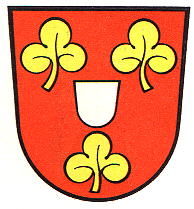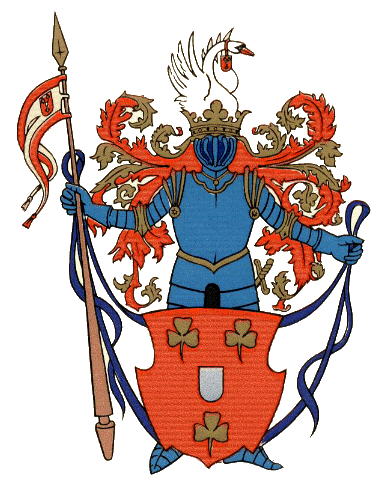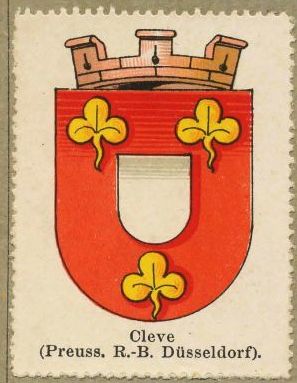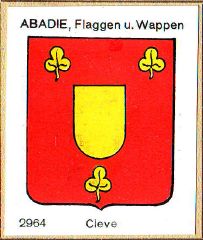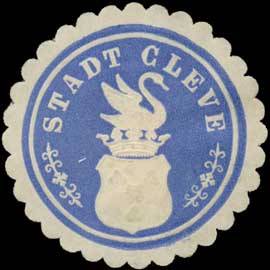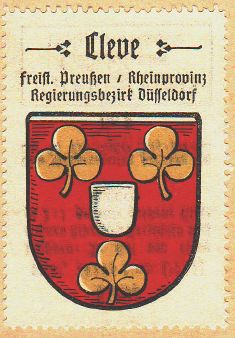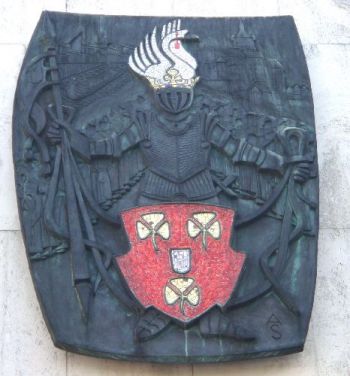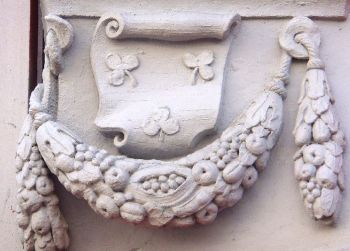Kleve (Kleve)
KLEVE
State : Nordrhein-Westfalen
District (Kreis) : Kleve
Additions : 1969 Bimmen, Brienen, Donsbrüggen, Düffelward, Griethausen, Keeken, Kellen, Materborn, Reichswalde, Rindern, Salmorth, Warbeyen, Wardhausen
| German | In Rot ein silberner (Herzschild, begleitet von drei (2:1) goldenen Kleeblättern. |
| English | (Kleve) No blazon/translation known. Please click here to send your (heraldic !) blazon or translation |
Origin/meaning
The present arms were officially granted in 1955 and did not change after the additions in 1969.
Kleve became a city in the 13th century. The arms show the old arms of the counts of Kleve, a red shield with a white escutcheon. The trefoils, or Kleeblättern, may be a canting symbol. The oldest great seals of the city show a castle or a city with between the towers the arms of the counts of Kleve (see the county arms).
The present arms also appear in 14th century contra-seals. From the 16th century the colours of the arms are known. In the 17th century often a knight was used as supporter and as a crest on the helmet a swan, with the small city arms hanging on a rope around his neck, was used, see below.
| Former full arms of Kleve | |
| The arms in the Wappen-Sammlung (1900) |
The arms in the Abadie albums |
| Seal from around 1900 |
The arms by Hupp in the Kaffee Hag albums +/- 1925 |
| Municipal stationery, 1960s |
The arms in the city (source) |
| The arms in the city (source) |
Literature: Stadler, K. : Deutsche Wappen - Bundesrepublik Deutschland. Angelsachsen Verlag, 1964-1971, 8 volumes; Nagel, R. : Rheinisches Wappenbuch, Köln, 1986.; old image from Joachim Beeck, Meerbusch.
